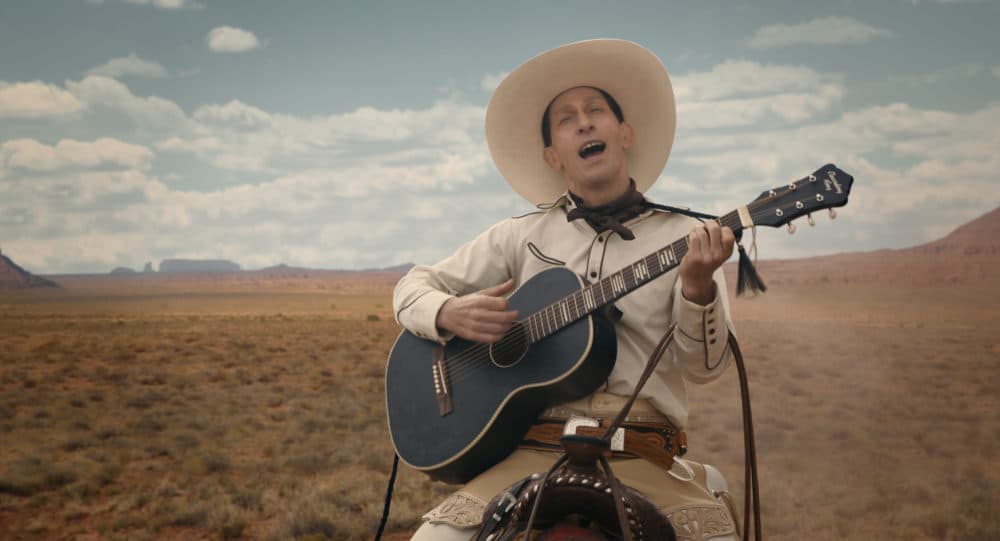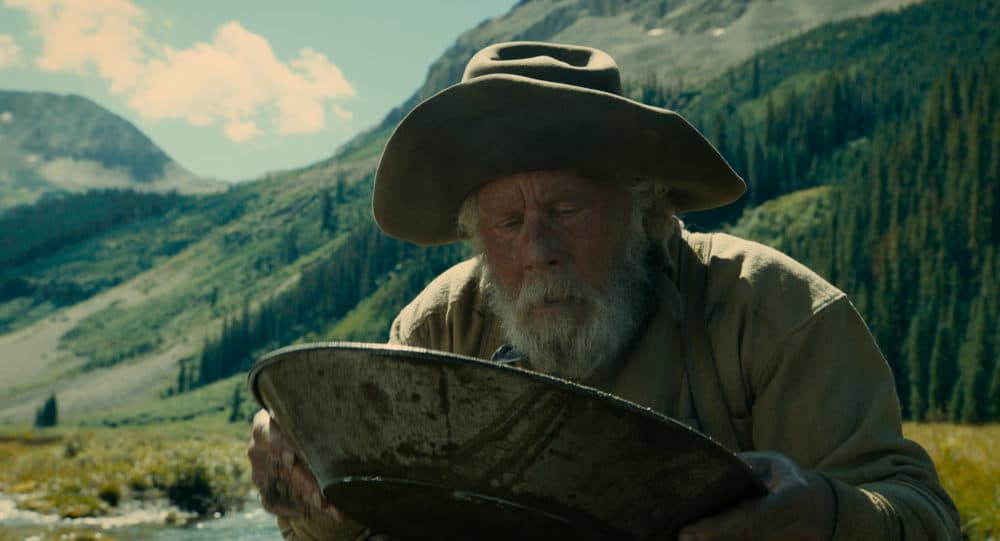Advertisement
Review
'Ballad Of Buster Scruggs' Puts Coen Brothers Diverse Directorial Talents On Display

Death comes swiftly and without warning in “The Ballad of Buster Scruggs,” a collection of six Old West vignettes from Joel and Ethan Coen varying wildly in tone but unified by the sardonic siblings’ peculiar brand of prankish existentialism. These punchy little tales veer from zany slapstick to heartbreaking tragedy, yet all work together in service of the Coen’s fatalistic, class-clown philosophy, according to which life might be just a cruel, cosmic joke but it’s a pretty good one sometimes.
Originally scripted and shot as a six-part limited series for Netflix, the project was re-conceived during editing as a standalone movie — a mandatory binge-watch serving as the siblings’ 18th feature film. At a time when more and more filmmakers are turning to series television, I admire the Coens’ contrarianism in getting halfway there and turning back. Because, despite its anthology structure, “The Ballad of Buster Scruggs” is very much a movie, and one of the brothers’ major works. The separate stories speak to each other in rewarding ways and laid start-to-finish form a complete journey that brings us (quite literally) to death’s door.
We begin with Tim Blake Nelson in a blindingly white suit and oversized, 50-gallon hat as singing cowboy Buster Scruggs. He directly addresses the camera, making cornpone jokes in that archly formal logorrheic Coen language that sounds like somebody swallowed a thesaurus. But it turns out this smiling, friendly fellow is also an outlaw with a hair-trigger temper, and the movie gets some massive comic milage out of the disparity between the deliberately artificial Gene Autry conventions and abrupt bursts of insanely graphic violence inside these stagebound saloons. (There’s one particular kill that made me guffaw so loudly I think I woke up my neighbors.)
It’s the silliest segment of the picture yet deceptively so, as by applying splattery consequences to seemingly benign old movie tropes the Coens are once again deconstructing less savory aspects of American frontier mythology. It’s not for nothing that the film is framed by the turning pages of a a clothbound storybook, for “The Ballad of Buster Scruggs” is fascinated by the stories we tell ourselves about the theft and settlement of the nation. And as with most Coen brothers movies, it alternates between deep compassion and gut-busting yuks.

The second chapter stars James Franco as a particularly unlucky bank robber, finding himself at the end of more than one hangman’s noose in a classically Coen-esque Rube Goldberg contraption of escalating misfortune. A more mournful episode features Liam Neeson as a down-on-his-luck traveling impresario in a tale that somehow manages to be both an indictment of dumbed-down audiences and a rather ruthless example of capitalism at work. There’s also an altogether lovely performance by Zoe Kazan playing a spinster without prospects on the Oregon Trail. Her story boasts a yearning romanticism seldom seen in the brothers’ work, which of course only makes the inevitable feel even more unfair.
I don’t know how it took 30 years for Tom Waits to turn up in a Coen brothers movie, as the sensibilities are so simpatico it feels like they’ve been working together forever. He gets a one-man show here as a chatty old prospector panning for gold in a segment inspired by a Jack London story. There are certainly worse ideas for short films than letting Tom Waits talk to himself for 20 minutes or so, and one of the big pleasures of “Buster Scruggs” is the wide variety of styles in which it lets the Coens strut their stuff. These guys are really darned good at a lot of different kinds of filmmaking, and from the hyper-verbal opening to Neeson’s nearly silent sequence it makes for a pretty dazzling demo reel of directorial virtuosity.
Advertisement

“The coachman never stops,” we’re told in the film’s final segment. It’s initially intended as an explanation of 19th century transit procedure but with an added shade of looming mortality akin to the recurring admonition “you can’t stop what’s coming” in the Coens’ “No Country For Old Men.” This mysterious and melancholy closing act finds a collection of strangers (including Brendan Gleeson, Tyne Daly and the great Saul Rubinek) on a stagecoach ride at sunset, headed for a destination unknown with an ominous air of foreboding that creeps into their conversation as the last vestiges of sunlight ebb into darkness. Honestly I’m not 100 percent sure I’ve wrapped my head all the way around this sequence quite yet, save for being quietly awed and unsettled by its strange power, which lingers with you long afterward.
But then the great gift of Coen brothers movies is the way in which they tend to open up upon repeat viewings, and “The Ballad of Buster Scruggs” is one I can see myself returning to time and again. At least until the coachman stops for me.
“The Ballad of Buster Scruggs” is now streaming on Netflix.
